Playing a role in a well coordinated team can elevate your airsoft experience.
In this sport, organization is one of the most important aspects of success. The planning and the advance study of the operational aspects decrease the number of unknowns during the execution of the activities, increasing the probability of success.
Establishing the roles of operational personnel is critical, in this regard: it allows tasks and equipment to be divided equally, allows for advance guidance on what falls to individual operators, and allows for individual strengths to be fully exploited.
It also facilitates positioning during movements, helps individuals focus on specific tasks, allows communications to be kept to a minimum, and, overall, streamlines and speeds up the performance of the operation.
The following are some of the roles that should be established within a team, before starting most common operations.
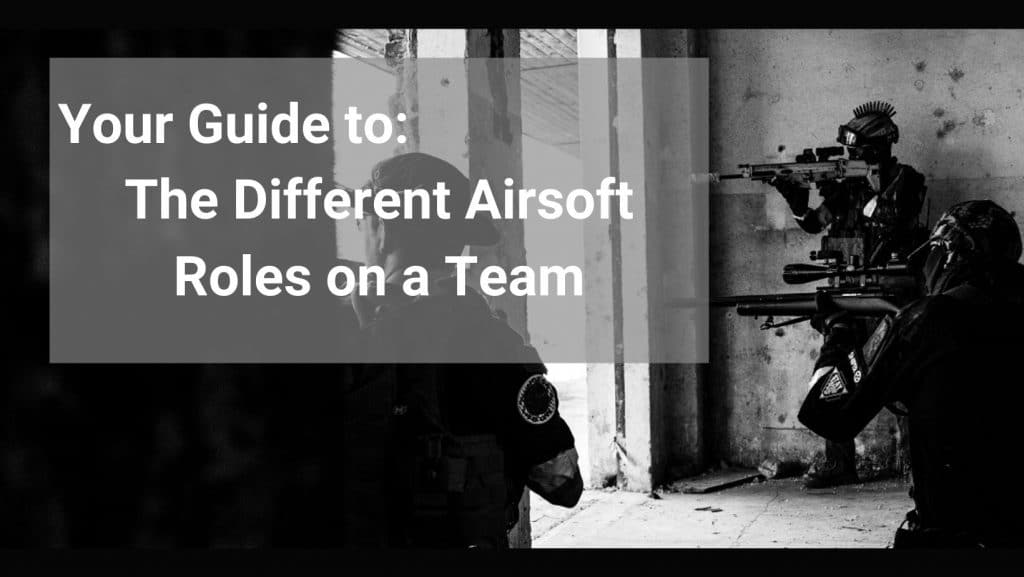
Rifleman / Infantryman
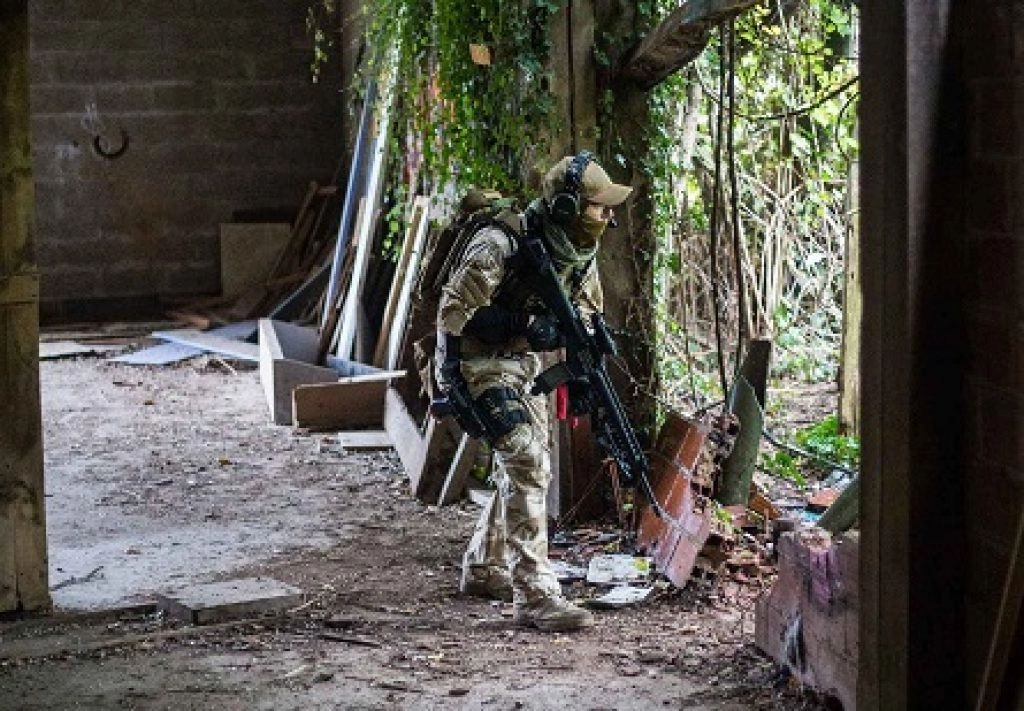
Description:
The rifleman is the basic role of any fireteam or squad unit. They are versatile operators, who normally focus on non-specialist tasks. Normally, they make up the largest number of staff, within a team.
Tasks:
They are basically in charge of general tasks, such as covering fire sectors, transporting squad equipment, and covering the patrol in static situations, while perhaps other specialized operators must perform particular tasks.
They are often assigned to organizational functions, such as navigation, radio communication, and transport of department equipment.
In operations, they handle basic movement and combat maneuvers. They are building blocks for infantry tactics.
In times of action, their job is to concentrate on the implementation of combat maneuvers, so that specialized operators can intervene in turn, contributing in a targeted manner according to their respective specialties.
Their priority, generally, is coverage. Not having to focus in any specific role, they must take the utmost care in covering the team during any type of operation or stationing, to ensure safety during the performance of specific tasks.
Equipment:
They generally have standard equipment such as:
- Infantry assault rifle
- Backup weapon
- Average number of magazines calibrated according to the type of mission.
- Medium armor, also proportional to the risk level of the mission.
- Basic survival gear like an Ifak, flashlight, compass, map, binoculars, radio, water, and some rations.
- If necessary, some grenades, flashbangs, or smoke grenades.
Grenadier
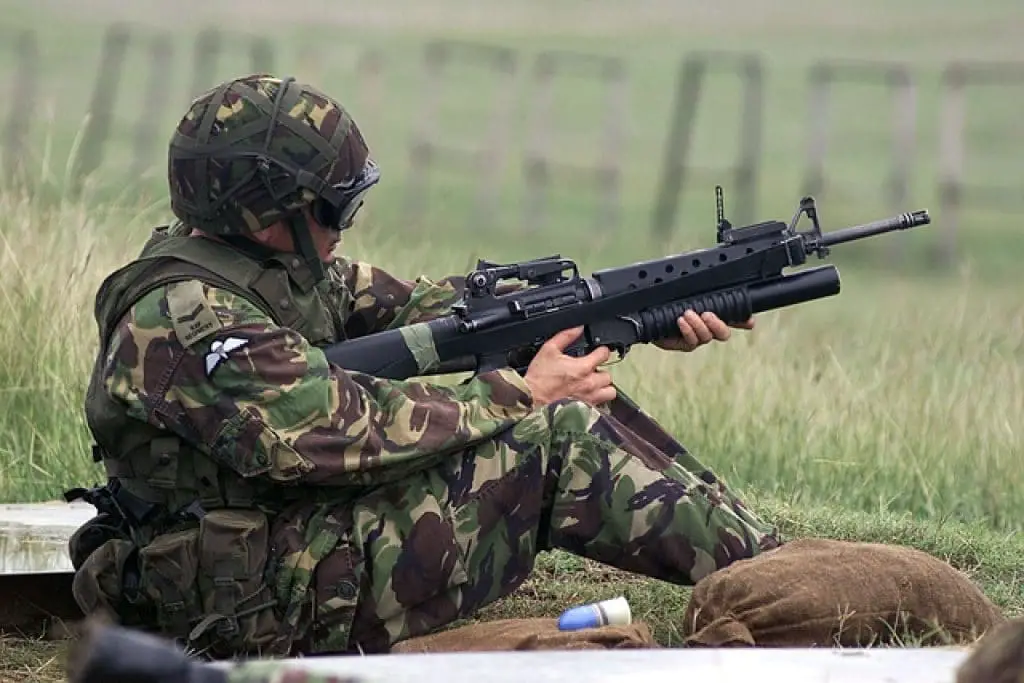
Description:
The grenadier is not drastically different from the rifleman in terms of equipment, but there are fundamental differences in operational behavior, priorities, and specialties.
Tasks:
The task of the grenadier is to exploit explosive equipment (or in the case of airsoft, also shower grenades), to reach opponents in positions difficult to attack with conventional fire or to eliminate enemies assembled in groups, or even to saturate unknown sectors in advance, trap paths, saturate fire sectors or carry out breach operations.
Grenades are extremely versatile devices: they can be thrown by hand around corners or over obstacles, or they can be ejected via grenade launchers, raining down a shower of rounds on the enemy. In addition, they can be set by wire (conventional grenades), placed on the ground (claymores), or concealed under the ground (pressure mines), to trap the perimeter of a target and ambush the enemy.
During a firefight, the objective of the grenadier is to eliminate enemies close by, or hidden in narrow locations, such as trenches, hallways, or even simply rooms.
They may also be deputed to breach tasks, room entrances, throwing stun grenades, or throwing signals or cover smoke grenades.
Equipment:
Grenadier equipment varies greatly depending on the task to be carried out. The primary equipment will always reasonably be an assault rifle (or SMG, depending on the context) and a backup weapon.
On the primary weapon, an under-barrel grenade launcher can be employed. However, a standalone grenade launcher can also be used as the primary weapon. In this case, it will be necessary to carry 40mm grenades.
In addition, always following the context of the mission, it will be appropriate to carry fragmentation grenades, flashbangs, smoke bombs, claymores, and pressure mines.
Automatic Rifleman / Support gunner
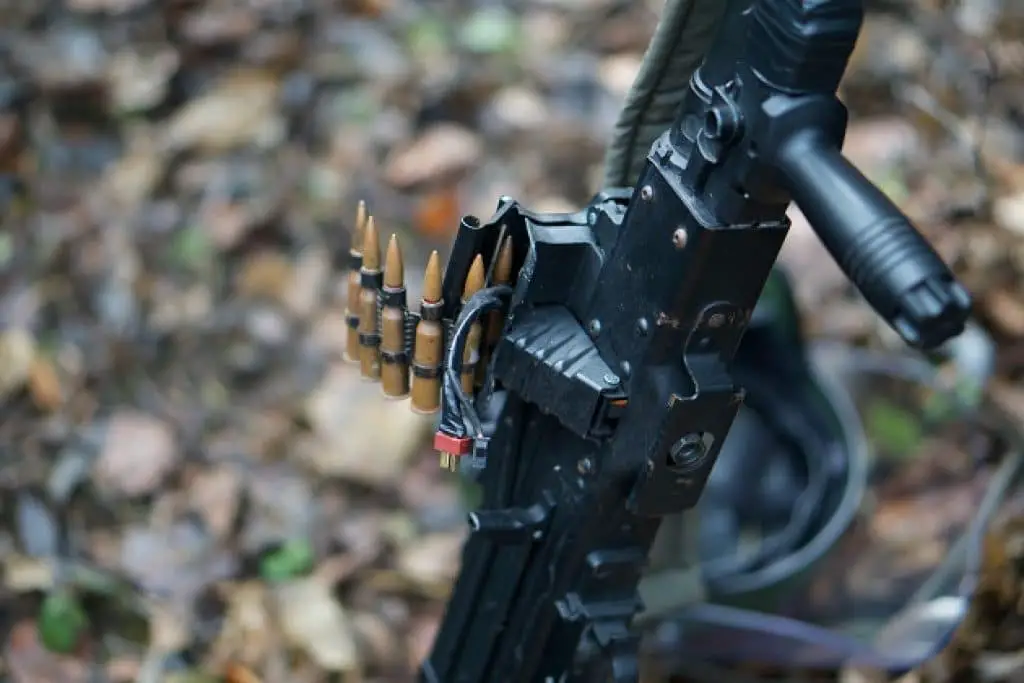
Description:
Gunners are operators equipped with LMGs (light machineguns) or SAW (squad automatic weapon), whose purpose is to increase the firepower of the patrol. They normally carry a lot of weight, given the type of equipment. They can have both offensive and defensive roles and are critical within any team.
Many of the squad or fireteam level tactics revolve around the proper utilization of the SAW gunner.
Tasks:
The support gunner can have an offensive or defensive role, depending on the type of engagement, the operational context, and the type of mission. For example, they may be responsible for surrounding an operational perimeter, covering a large sector, to relieve the riflemen of this responsibility, who can concentrate on a more dangerous sector.
They are in charge of saturating more or less large sectors with great firepower, either to eliminate large quantities of scattered enemies or to cover the advance or retreat of the team, thanks to a vigorous covering fire. Basically, they deal with saturation.
The basic idea is that when a gunner opens fire the a sector becomes interdicted and nothing can move there.
This forces the enemy to stay in cover, while the friendly patrol is free to move, either to advance or to retreat. They can also be used statically to guard targets and checkpoints.
Classically, a SAW gunner will have an assistant nearby who can help with spotting, carry additional ammunition, and assist in covering during reloads.
Equipment:
They will normally carry a light machine gun, often equipped with a bipod and 2-4x sights or optics, and a backup weapon.
Classic squad automatic weapons or light machinegun platforms include:
- M249 (FN Minimi)
- M240
- M60
- MK48
- MK46
- MG4
- Negev
- L86 LSW
- Stoner 63
- RPK74
- PKM
This isn’t an exhaustive list, but it includes some of the more common weapon systems.
Depending on the type of mission, they may also need to carry a machine gun mounting tripod to set up static garrison positions.
Usually, there is a tendency to eliminate unnecessary equipment (in any case, never survival or safety equipment) to allow the machine gunner to have no additional burden and no additional fatigue.
Medic / Corpsman
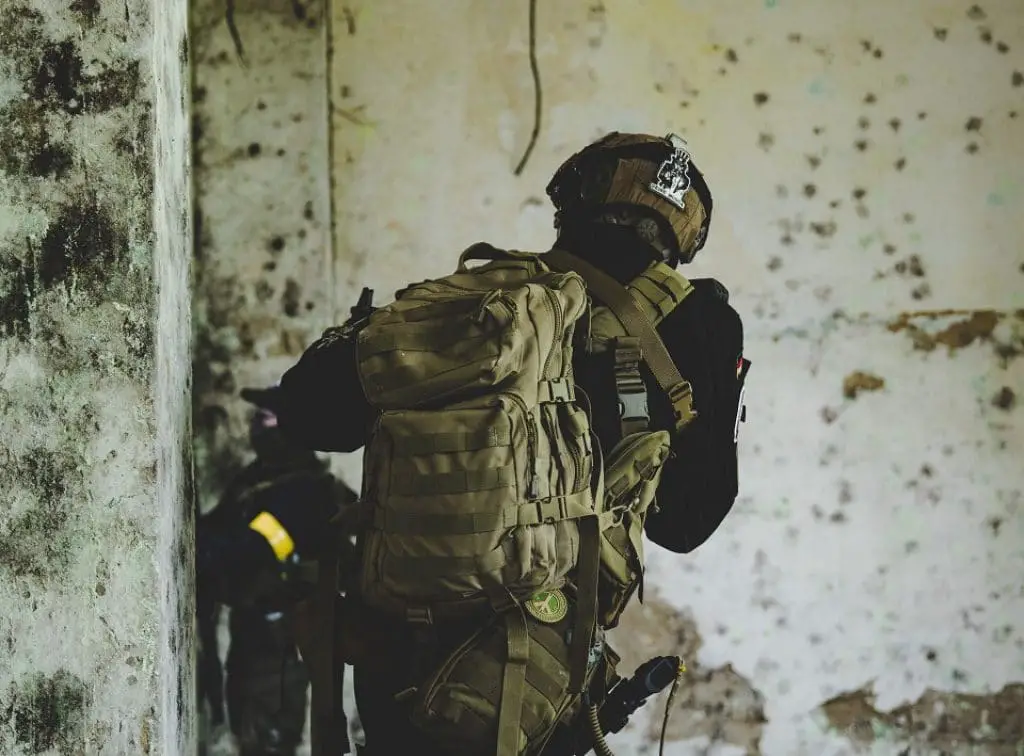
Description:
The medic, or corpsman, is an operator who must devote his efforts and the organization of his equipment to maintain the combat-ready status of other operators. His tasks may extend beyond the simulation ones, in cases of emergency. If possible, it would be good if this role was held by a person familiar with the practices of first aid.
In an airsoft MILSIM event, there are typically specific rules that cover the abilities of the medic. You’ll want to review the rules forwarded by the event coordinator to determine what these are, as they are different from event to event. Check out our guide to MILSIM airsoft for more info.
For example, the MILSIM West organization has an entire Tacops document covering what a medic is allowed to do.
Tasks:
The task of the doctor is to restore the operation of the affected comrades or to organize their exfiltration, according to the medical conditions.
The typical action consists of reaching the wounded companion and putting in place the maneuvers for rehabilitation, according to the rules of the simulation. Sometimes they may have to deal with the extraction of the wounded, before proceeding to the dressing.
Moreover, as already said, it can be that they must intervene in giving first aid in situations of real injury, waiting for the arrival of the real help.
It must be remembered that, although they are assigned to help tasks, they remain operational units, and must contribute normally to combat situations, without exposing themselves too much, to avoid being eliminated and not being able to help their comrades.
Equipment:
They usually employ small arms to be less of a hindrance to movement and dressing maneuvers. Light equipment, with compact rifle / carbine or an SMG, with a backup weapon are more than enough.
They will need to carry a massive number of medical supplies, to make sure they will be able to have everything needed to treat most common wounds. So, you can expect them to carry a large rucksack or backpack.
Designated Marksman
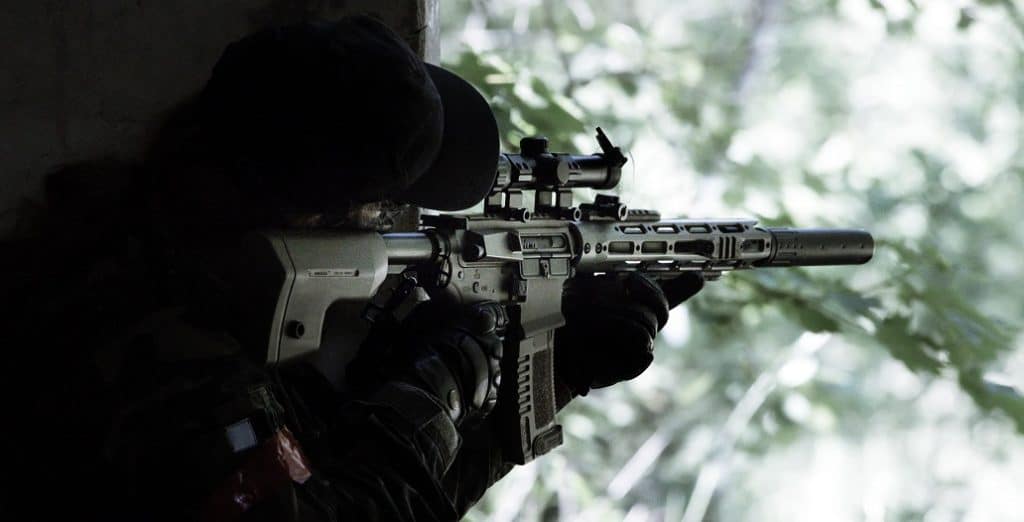
Description:
The DM is a unit that is dedicated to long-range engagements, ensuring the team can eliminate distant contacts or defend against enemies equipped with higher-performance weapons that can shoot farther. It is an operator that remains within the formation, and it is advisable to have one with you in case of open field engagements or movements.
Just bear in mind that airsoft effective ranges are much shorter than real firearms.
Tasks:
The DM is in charge of handling contacts that are at distances at which they cannot easily be reached by conventional weapons.
They often serves as a scout or point man within the formation as well. He may lead the patrol, scanning the unexplored territory in-depth for targets, points of interest, and contacts, or he may be in the middle of the marching formation if he is a particularly important element to preserve in view of specific operational tasks.
Equipment:
The standard equipment is similar to that of a rifleman, but instead of a classic assault rifle he prefers a precision rifle (also known as a DMR or designated marksman rifle) for long-range engagements, equipped with fixed zoom sighting devices for long-range, or variable, to be able to counter contacts even on short range.
Some classic examples of a DMR are:
- HK 417
- MK14 / M14
- MK 12
- SR 25 MK 11
- M110
- Scar SSR
- SVD
As usual, this isn’t an exhaustive list. The idea is that they are precision level rifles meant to engage at distance.
Normally, sighting devices such as binoculars and monoculars, and advanced measuring and navigation instruments such as rangefinders and GPS are preferred to explosive equipment.
Sniper
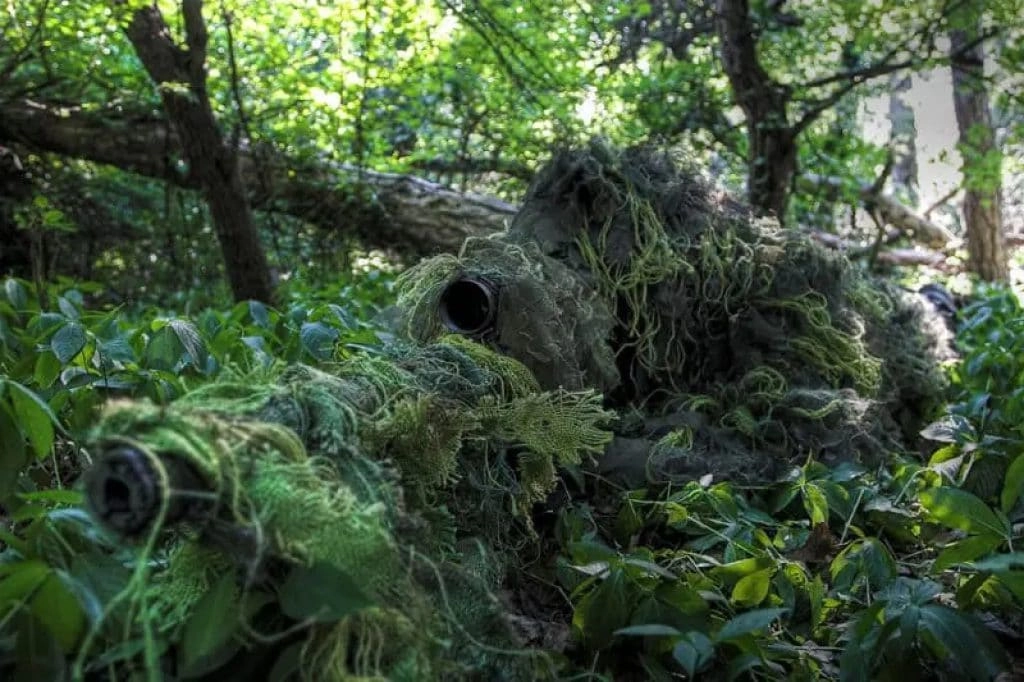
Description:
Similar to the DM, the sniper is responsible for handling situations from a distance. It tends to be an operator who acts away from the team, but still keeping contact.
Tasks
The sniper is an operator mainly dedicated to reconnaissance tasks, information gathering, or elimination of specific contacts. Generally, the sniper’s duty is to lurk in an elevated and hidden position, observe points of interest and collect information to share with the allied faction.
In some, rare cases, he can deal with jobs of elimination of notable contacts, given the greater precision and range of his equipment. However, a sniper is hardly self-sufficient in an operational context, and if confronted by a rival team he will be forced to retreat, and it will risk being eliminated.
Equipment:
The sniper’s equipment is devolved to the task of observing and interacting with elements placed in the distance.
The primary weapon is normally a precision rifle, bolt-action or semi-automatic, rarely automatic, and has backup weapons with vigorous firepower, despite its small size, such as small SMGs. This serves to compensate for the inadequacy of the primary weapon in short-range engagements, as it is often bulky, equipped with powerful optics and stabilization systems such as bipods.
Some sniper rifle examples are:
- M40 (a variant of the Remington 700)
- Accuracy International AW (AWM)
- M21 SWS
- M25
- M82
There are other sniper rifles in existence, but these are fairly common.
In addition, it has auxiliary measuring and observation instruments, such as night-vision goggles, rangefinders, long-distance monoculars, and so on. It normally shares the bulky equipment with the operator with whom it is paired, since it will rarely be performing tasks alone.
Team Leader / Squad leader
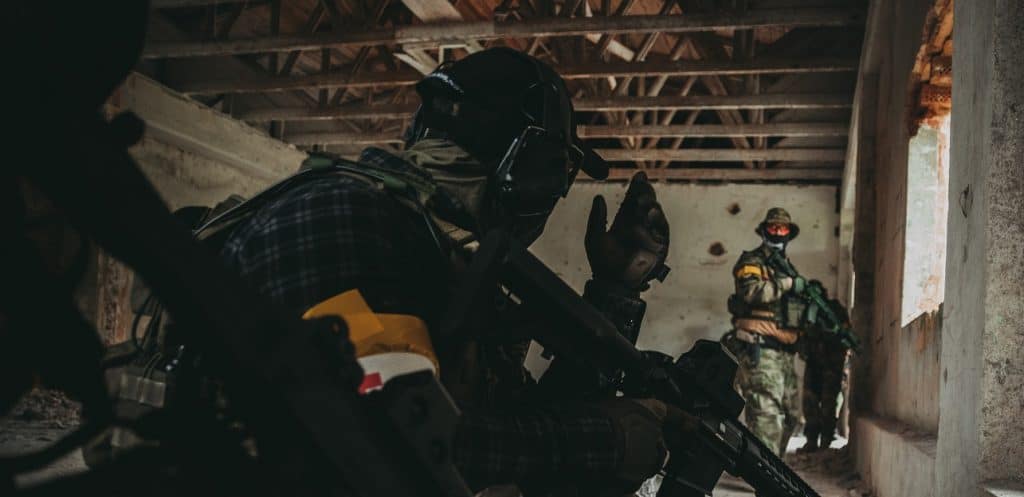
Description:
The team leader is the beating heart of the team.
He or she must be able to communicate clearly and concisely, think quickly, and adapt plans promptly as the situation evolves.
Tasks:
The TL must establish rendezvous, prioritization of objectives, marching formation, chain of command, division of tasks, operational behavior, and much more. Basically, nothing and no one moves unless ordered to do so by the team leader.
He or she is usually assisted by a deputy, who takes over in the event the team is split up or the TL is eliminated. He is in charge of managing all aspects of the operation, even before entering the field, evaluating together with the operators the operating conditions, the necessary equipment, the routes to be followed, the tactics and combat maneuvers, and so on.
The leader must take care to safeguard the safety of the team.
Everyone in the team must rely on his decisions, and it is his responsibility to complete the mission without anything happening to his team. It is a task of high responsibility, and you must be experienced in tactical, physical, technical, and human terms.
Equipment:
The equipment is standard, with no major differences from that of a rifleman. However, it tends to have some extra equipment.
It is necessary to have an extra radio, to be able to receive communications coming from the headquarters and must have the execution plan of the mission, so you can follow a schedule and keep in mind what are the Tasks of the team and individual operators.
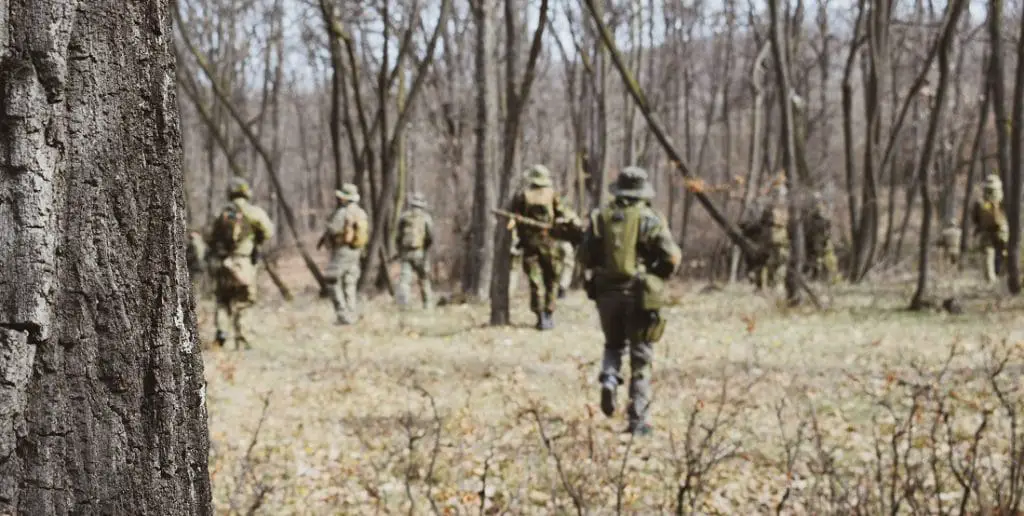
FAQ
DMR vs Sniper: What’s the difference?
First, the DM stays with the team all the time, or in its immediate vicinity, in order to be able to fight promptly and actively; the sniper, however, will operate away from the patrol, in a static and hidden position, from which he will hardly move.
Moreover, at the moment of engagement, the sniper does not necessarily have to open fire: in fact, for mission-related purposes, it may be wiser for him to keep his position hidden, to devote himself to more important objectives.
Another difference lies in the type of tasks that the two operators cover: DMs, generally, are operators who actively participate in firefights, lead the team and it is not uncommon that they have to shoot down enemies or make observations on the spot, in a few minutes, on newly explored terrain.
Snipers, on the other hand, rarely open fire: they usually remain hidden and stationary for many hours and devote themselves mainly to information gathering and communication, rather than to the shooting down of contacts. Even this, however, can happen, but normally the sniper will shoot down targets of extreme tactical value, such as faction leaders or communication devices, or electrical systems (if the simulation involves such elements).
How many people can be on airsoft team?
A CQB situation can be handled by a small team of 4-6 operators, while complex operations in large woodland theaters may require a team of 14-16 people, perhaps supported by other teams.
There are also reconnaissance teams, which normally consist of 2 operators, to maintain a low profile and make sightings difficult.
Many operators are found to give their best in medium-sized teams of about 8-10 operators, but it all depends on personal preference, fellowship, and the needs of the operational environment.
Check out our next article on the essential airsoft safety gear you’ll need to start playing.








